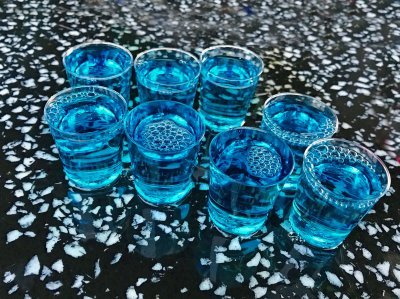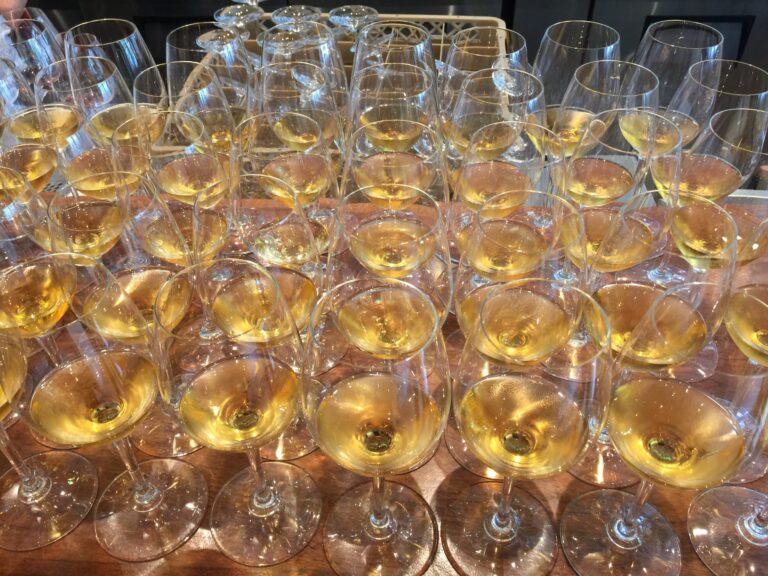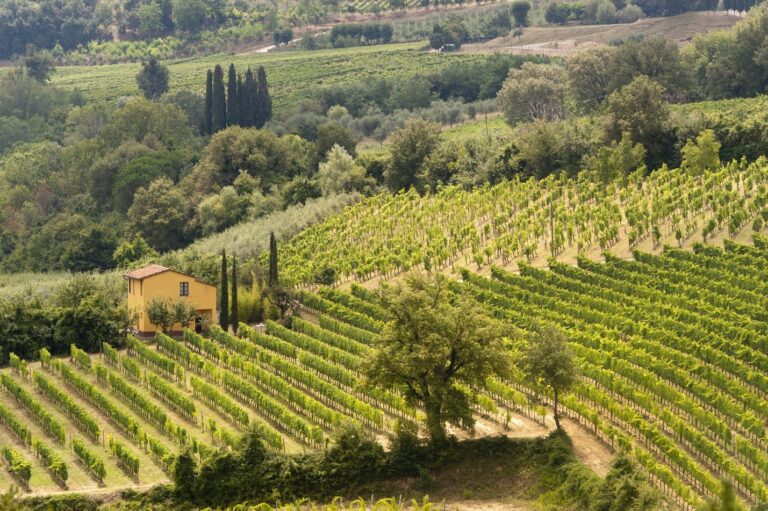Guest post: by Augusto Oriani
Today we delve into the world of blue wine. Many people are stunned by the prospect of seeing a blue wine. They would think about, what devilry or artifacts have been added to obtain this colour, perhaps a white wine with the addition of Curacao, a coloured liqueur blue or something else more magical. Many might think of a blue wine more in line with a scene from some Star Trek science fiction movie.
Gik, a Spanish company founded by a group of young entrepreneurs was created and launched the first blue wine in the world, on the market. “Two years of research were required to conceive this product in close collaboration with various technological institutes related to the food sector.” They defined the “Blue Wine” as the nectar of the Gods, nothing original here in the description though. This is a drink that is having considerable success on the tables, especially in Spain, perhaps more to the unusual color than the quality. The evolution of this product is the result of many different factors, which determine the quality of the blue wine, its intensity and its colour. The grapes, combined with the winemaking system traditionally is how wine is made. The wine quality of any wine made is debatable as it depends who is assessing and who is drinking the wine.
How Blue wine is made is intriguing. Blue wine is produced using a mix of white and red grapes from the vineyards of Rioja, Navarra and Saragoza: natural dyes are then added to the grapes. As for the alcohol content of this wine, it is relatively low; among the grapes that are used for its production are the Syrah, Airén and Garnacha grapes.
The pomace is not left to macerate and there is no ageing in barrels of this wine. During the production phases Gik has its own method. Following the fermentation of the grapes, pigments are added that are obtained from the berries of red grapes, called anthocyanins or anthocyanins. A natural dye is also added which helps to give this wine its typical blue colour.
Therefore, tasting Gik is not simply dealing with wine, but with additive innovation, breaking the rules and reinventing or breaking tradition, depending how you see it.
The creators of this wine claim that thanks to the variety of grapes used, they are able to obtain a wine that is fresh and sweet on the palate, without adding sugar, and with 11.5% alcohol by volume”, it is off dry verging on semi-sweet. Best served at a temperature of eight degrees, possibly paired with sushi, smoked salmon, nachos with guacamole or a carbonara.
Being intrigued by the phenomena of Blue wine, I asked Professor Dr. Clinton Lee, expert in the wine sector, for his opinion.
Prof. Dr. Clinton Lee – Executive Director of the Asia Pacific Wine and Spirit Institute.
One needs to consider several perspectives here which would include the following:
- Perception
- Methodology of process
- Quality of the wine
- How sustainable is Blue wine in the market-place?
-
- The majority of wine drinkers globally are more accustomed to the traditional red, white, rose and to an extent orange, coloured wines. A blue wine is certainly captivating to the wine consumer visually and this generates interest as the eye is mesmerized.
- Naturally, this is wine so the traditional method of grapes, sugar, yeast and fermentation are followed. What differs is the additives that are added, these could include food colouring, not generally the norm and then coloring from dried red grape skins. Any winemaker will acknowledge when you pick grapes at harvest-time and plunge the grapes into the bins then move them to the de-stemming machine, you will see a deep blue color liquid from the grapes lying at the bottom of the bins. This can be used as a colouring additive.
- This is debatable, as the quality of any wine irrespective of color, can be related to who is drinking the wine, the wine consumer, the wine-judge, the technical wine professional will all have different opinions. Over the years I have found quality is very subjective.
- This can be evident from how pervasive this wine has spread. It would appear to be more of a commercial burst of interest, judging from the limited spread of blue wine. What is of more importance would be the creation of a blue wine. We should congratulate Gik on their innovation and why? Like every new season we see new shoots, Gik is the new generation and we should always find and expect something new from each generation. That’s life so let me go and try a glass of blue wine now.
I thank Dr. Clinton Lee, a very great friend for his comprehensive answer.




